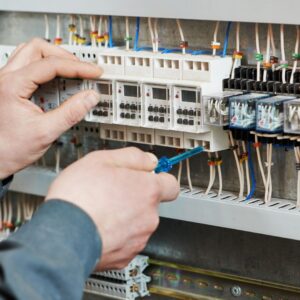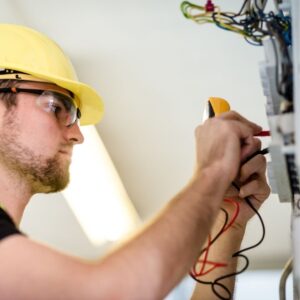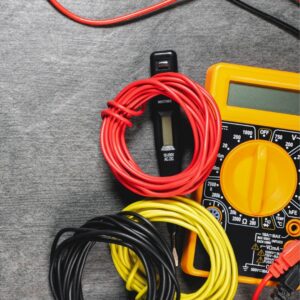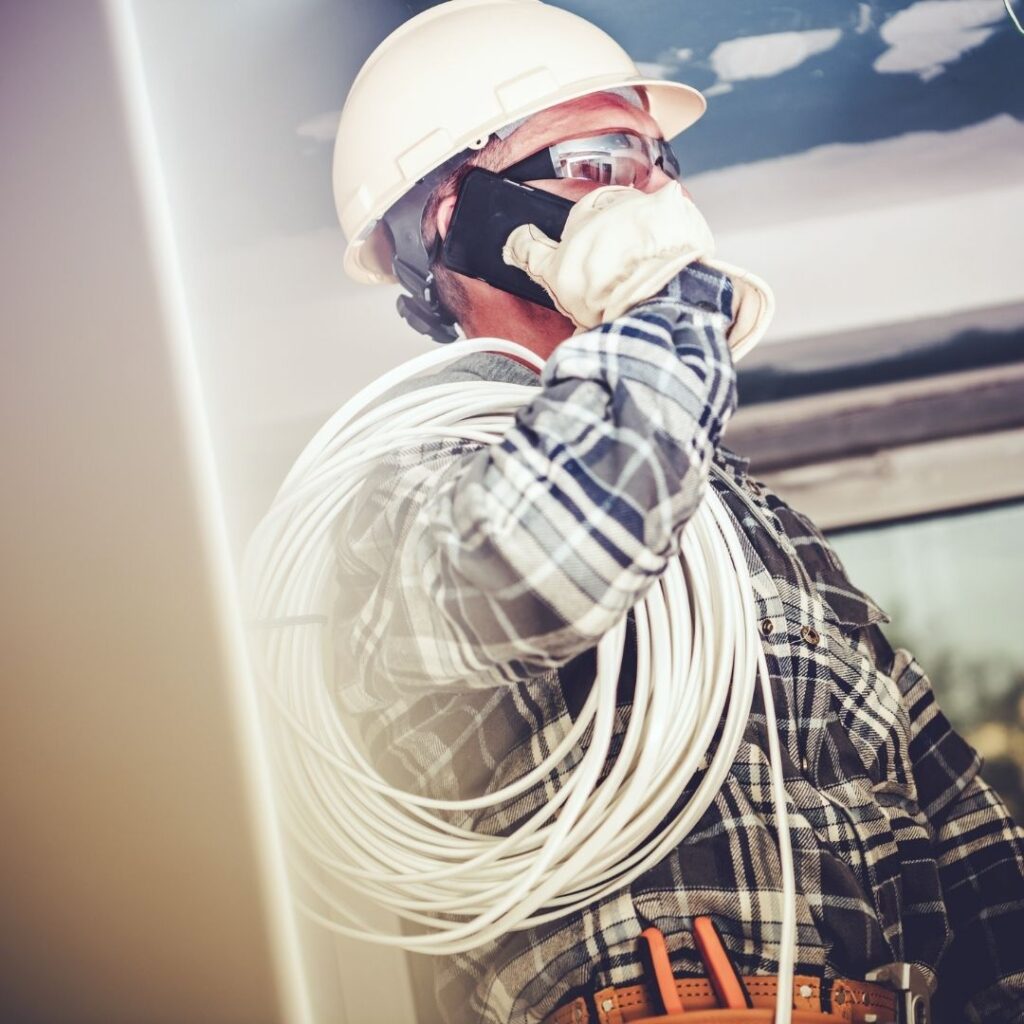A home circuit tester is one of the most valuable tools for maintaining electrical safety in residential properties. This comprehensive device allows homeowners to verify proper wiring connections, identify potential hazards, and ensure their electrical systems function correctly. Understanding how to properly use a home circuit tester can prevent electrical accidents, reduce energy waste, and provide peace of mind about your property’s electrical integrity.

Understanding the Importance of Circuit Testing
Regular electrical testing with a home circuit tester serves as the first line of defense against common household electrical hazards. Faulty wiring causes numerous preventable electrical fires each year, making routine circuit testing an essential safety practice. A quality home circuit tester can identify reversed polarity, open grounds, and other dangerous wiring conditions that might otherwise go unnoticed until they cause damage.
For more comprehensive electrical inspections, professional services from an Electrician Kirribilli can supplement your own testing with advanced diagnostic equipment. However, having and using a basic home circuit tester allows for more frequent checks between professional inspections.
Types of Home Circuit Testers Available
The market offers several types of home circuit tester devices suitable for different needs and skill levels. Simple outlet testers provide basic functionality for checking standard power points, using a series of lights to indicate wiring conditions. These plug-in models are affordable and easy to use, making them ideal for most homeowners.
More advanced multimeter-style home circuit tester units offer greater functionality for those comfortable working with electrical systems. These devices can measure voltage, current, and resistance, providing detailed information about circuit conditions. Some models even include non-contact voltage detection, allowing you to check for live wires without direct contact.
For specialized applications, professional-grade home circuit tester equipment is available, though these typically require more training to operate safely and interpret results correctly. Our Complete Guide to Testing Wiring for Safety provides additional information about choosing the right tools for your needs.
How to Properly Use a Home Circuit Tester
Using a home circuit tester correctly requires following specific safety procedures to avoid electrical shock or damage to the device. Always begin by visually inspecting the tester for any signs of damage before use. When testing outlets, insert the probes or plug fully into the receptacle to ensure proper contact and accurate readings.
For basic outlet testers, the pattern of illuminated lights will indicate the wiring condition according to the device’s legend. Common indications include correct wiring, open ground, open neutral, hot/neutral reversal, and other fault conditions. More advanced home circuit tester models may display numerical readings that require comparison to expected values for proper interpretation.
Remember that while a home circuit tester can identify many common problems, some electrical issues require professional diagnosis. If your testing reveals persistent problems or conditions you don’t understand, contact a qualified Electrician Chippendale for further investigation.
Common Electrical Problems Detected by Home Circuit Testers
A reliable home circuit tester can identify several potentially dangerous wiring conditions in residential properties. Reversed polarity, where hot and neutral wires are connected incorrectly, can create shock hazards and damage sensitive electronics. Open ground conditions leave circuits without proper safety grounding, increasing the risk of electrical shock.
Other issues detectable with a home circuit tester include shared neutrals that can cause circuit overloading, and bootleg grounds that create false grounding paths. These conditions might function temporarily but pose significant safety risks over time. For commercial properties with more complex systems, Commercial Electrician Services use professional-grade testers to evaluate larger-scale electrical issues.
The Relationship Between Circuit Testing and Energy Efficiency
Regular use of a home circuit tester contributes to overall energy efficiency in several ways. Properly wired circuits operate more efficiently, reducing energy waste from poor connections or voltage irregularities. Identifying and correcting wiring faults can prevent phantom loads that drain power even when devices are turned off.
Our guide to Electricity Saving highlights how maintaining properly functioning electrical systems forms the foundation for other energy efficiency measures. For industrial applications, Industrial Electrician Services perform similar testing on a larger scale to optimize energy usage in commercial facilities.

Safety Precautions When Using Home Circuit Testers
While a home circuit tester is designed for safe use by homeowners, certain precautions should always be followed. Never attempt to test live circuits with wet hands or while standing on a wet surface. Always use the tester according to manufacturer instructions, and never bypass safety features or attempt to modify the device.
If your home circuit tester indicates a serious fault, avoid using the affected circuit until a qualified electrician can inspect and repair it. For complex electrical systems or when in doubt about test results, contact professional electricians like those at Lightspeed Electricals for expert evaluation.
When to Upgrade Your Home Circuit Tester
As electrical standards evolve and technology advances, older home circuit tester models may become outdated. Consider upgrading your tester if it lacks modern safety features, doesn’t support current electrical standards, or shows inconsistent results. Newer models often include additional testing capabilities and improved safety designs.
For homeowners undertaking major renovations or electrical upgrades, investing in a more advanced home circuit tester might be worthwhile. These projects often reveal the limitations of basic testers and demonstrate the value of more comprehensive testing equipment.
Professional Electrical Testing vs. Home Circuit Testers
While a home circuit tester provides valuable basic functionality, professional electricians use more sophisticated equipment for comprehensive evaluations. Advanced testing methods like insulation resistance testing, earth fault loop impedance measurement, and thermal imaging provide deeper insights into electrical system health.
Professional testing is particularly important when purchasing a new home, after electrical storms or flooding, or when experiencing persistent electrical issues. A quality home circuit tester serves well for routine checks between professional inspections, but shouldn’t replace periodic evaluations by qualified electricians.
Troubleshooting Common Home Circuit Tester Results
Understanding how to interpret your home circuit tester readings is crucial for effective use. Correct wiring should produce the specific indicator pattern described in your device’s manual. Any deviation from this pattern suggests a wiring issue that may require attention.
For example, an open ground indication means the circuit lacks proper grounding protection, while a hot/neutral reversal shows the wires are connected incorrectly. Some testers can also detect more subtle issues like high resistance connections or voltage fluctuations. When in doubt about any reading, consult a professional rather than attempting repairs yourself.
The Future of Home Circuit Testing Technology
Home circuit tester technology continues to evolve with new features and capabilities. Wireless connectivity allows some modern testers to sync with smartphone apps for detailed reporting and historical tracking. Advanced models now incorporate non-contact sensors that can detect wiring conditions without direct electrical contact.
Future home circuit tester devices may include AI-assisted diagnostics that can predict potential issues before they cause problems. Integration with smart home systems could enable continuous monitoring of electrical circuits rather than periodic manual testing. These advancements will make electrical safety more accessible to homeowners while providing more comprehensive protection.
Choosing the Right Home Circuit Tester for Your Needs
Selecting an appropriate home circuit tester depends on several factors including your technical comfort level and the complexity of your home’s electrical system. Basic outlet testers suit most homeowners for occasional checks, while those comfortable with electrical work might prefer multimeter-style testers with more functions.
Consider the types of circuits you need to test – standard 120V outlets, 240V appliances, or specialized installations may require different testing capabilities. Look for testers with clear, easy-to-understand indicators and robust safety ratings. For professional recommendations, consult with qualified electricians in your area.
Integrating Circuit Testing into Your Home Maintenance Routine
Making home circuit tester checks part of your regular maintenance schedule helps catch problems early. Test all outlets at least annually, or more frequently in older homes or after electrical storms. Pay special attention to outlets in kitchens, bathrooms, and other high-moisture areas where electrical hazards are more likely to develop.
Documenting your home circuit tester results over time can reveal developing issues before they become serious. Note any changes in readings or persistent minor faults that might indicate underlying problems. This historical data can be valuable for professional electricians when diagnosing intermittent or complex electrical issues.

When to Call a Professional Electrician
While a home circuit tester is invaluable for basic checks, certain situations require professional expertise. If your tester consistently shows faults you can’t explain, or if you experience electrical problems despite normal test results, contact a qualified electrician. Other warning signs include frequently tripping breakers, buzzing sounds from outlets, or burning smells from electrical components.
For complex electrical projects, safety upgrades, or when dealing with uncertain test results, professional services like those offered by Lightspeed Electricals ensure proper diagnosis and repair. Remember that electrical work can be dangerous, and some tasks should always be left to licensed professionals regardless of your testing capabilities.
Conclusion: The Value of Regular Circuit Testing
A quality home circuit tester represents a smart investment for any homeowner concerned about electrical safety and efficiency. By incorporating regular testing into your home maintenance routine, you can identify potential hazards early, verify proper electrical function, and maintain peace of mind about your property’s electrical systems.
While no substitute for professional electrical services when needed, a home circuit tester provides valuable ongoing monitoring between professional inspections. Combined with other safety measures and energy efficiency practices, regular circuit testing helps create a safer, more efficient home environment for you and your family.


